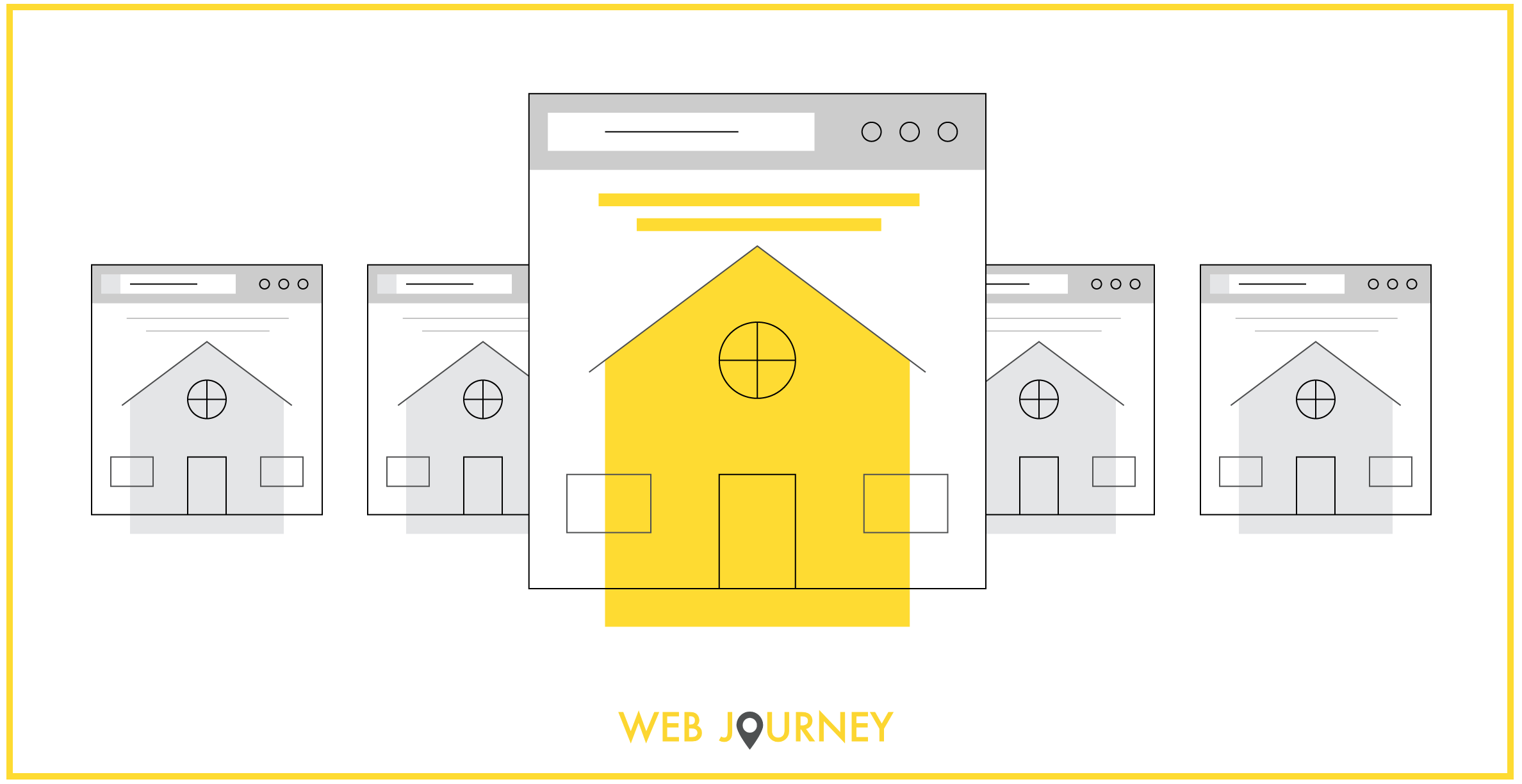First impressions last, and your website is often the first place that a prospect makes contact with your company. Around 80% of people start their search for products and services online. The majority will use that initial experience to decide whether or not they are going to connect with you.
So put yourself in their position. Take a step back and take an objective look at your website. See if you would be likely to make contact if you were looking for your products or services.
The following are some of the key signs that you need a website redesign, so take these into account too ...
1. It Doesn't Work Well On Mobile
57% of traffic is now coming from mobile devices, according to a recent BriteEdge study. This figure will continue to rise, meaning your website needs to be optimised to work well and look great on all types of devices, from desktops to tablets to mobile phones.
The solution to this problem is a responsive website. A responsive website adapts to the size of the device you are using. It 'rearranges' itself, reduces text sizes etc. to fit nicely on different sizes of devices so that it's easy to view and use.
If you want to see how yours looks on different types of devices and don't have access to a whole load of devices, many online tools are available like BrowserStack.
So look at your website and see if it's responsive and if you'd be happy with it if you were in your visitor's shoes. If not, start planning, as making it responsive will pay off.
2. Your competitor's site is Way Better!
Who doesn't want to be better than their competitors? Reviewing your competitor's websites to see how they compare with yours is something you need to do at least once a year. If you find theirs is significantly easier to navigate, better designed and includes more relevant content, you can be sure your potential customers see the same.
3. Your Site is Too Slow Loading
Everyone expects websites to be lightning-fast, and if your website doesn't match that expectation and loads in about 2 seconds, visitors will go elsewhere. If it takes 4 seconds to load, you are likely to lose over a third of your visitors. In short, the longer your site takes to load, the more visitors you will lose. So you need to take this one very seriously.
Website speed is also a factor in search engine rankings. You will go further down the results pages if your site is slow. If you want to see how fast your website is loading, try testing it using Google's PageSpeed Insight tool or Pingdom.
If you do have speed issues and are considering the optimisation route, be careful if you have a large site with a lot of optimisation issues, as it could well end up working out more expensive, and you may never achieve your goal.
Sometimes, the best route is a redesign, so ensure you get a professional opinion. Redesigning your site will also allow you to achieve much more apart from making it faster!
4. Your site Isn't Optimised for Search Engines
If you want to be found by people searching, you must ensure your site is well-optimised for SEO. With most buyers starting their research online when purchasing a service or product, you need to build your SEO to rank for relevant keywords in search engines.
Check your organic search engine rankings to see where you rank for your most important keywords. Also, ask yourself if the business has changed and if you should be looking to rank for some new keywords.
If your site wasn't originally built with SEO in mind, then you should be looking to rectify that as a priority. In the meantime, you can consider some paid search advertising like Google AdWords to help build traffic while you work on your SEO.
5. You Can't Update Content Easily
It's essential to regularly put fresh content on your website, whether it's a new blog post or updated product or service information. You don't want to pay a web developer each time you need to do this, so make sure your website is built on a good content management system (CMS) like WordPress (which is Free) or something more sophisticated like the HubSpot CMS Website Platform. There are loads of good content management systems available today so you've no excuse.
If this is an issue, take back control of your site and develop a new one on a good CMS like HubSpot.
6. Your Visitors Arent Taking A Good Look Around
Check your web analytics for high bounce rates across your pages, low average pages per visit and low time on site. (A ‘bounce’ is a single-page session on your site. Basically, someone has landed on a page and hasn't gone any further around your site. )
If bounce rates are high and the other two are low, you will surely have a problem. These can be attributed to several things. A few of these are
- Low-quality content that doesn't answer the visitor's questions
- Poor user experience on your website, e.g. difficult navigation, visitors can't find what they need, etc.
- Looking for too much personal information on landing pages, etc
If you have an old site, it can be difficult to resolve issues if they are on a large number of pages. So consider your options carefully.
7. Your Business Offerings or Business Goals Have Changed
All businesses evolve over time, and your website should too. If your website doesn't evolve, then you are more than likely losing out on customers. Review it to see if it fits your business today and your messaging. If it doesn't, then it's time for changes. It may well be that it's just content updates or a few new pages, but go through it all and see what needs to be done.
8. Traffic Isn't Qualified Traffic and Visitors Aren't Converting
All businesses want to attract visitors who are most likely to purchase, convert them into leads and move onward to a sale.
Getting lots of traffic is one thing, but if they're not the right kinds of visitors (i.e. someone who is in actual need of your product or services), then you need to review your strategy. At a very high level start by considering the following
- Who exactly are we trying to attract to our website? What do our ideal clients look like?
- What business challenges do they typically face?
- Are we promoting our website content on channels where they are, e.g. LinkedIn, Instagram, etc
- Do we have content on my website to help them with their challenges through the buying process?
Check out the following resources if you need some help defining your ideal buyer:
- Blog: How to Build a Solid Foundation for Marketing Success
- Download: Guide to creating Buyer Personas [+ Free Template]
When visitors are the right kind of visitors but aren't converting, then ask ...
- Do we have ways in which we can convert visitors into leads on the website? E.g. Landing pages with forms for downloads such as eBooks in exchange for their details
- Do we have at least one Call To Action on every page?
- Have we optimised our landing pages, forms etc.?
Check out our blog post How To Attract Ideal Clients to your Website for tips on getting the right kind of traffic.
9. It Looks Old
Have you ever landed on a website cluttered with loads of long, texty paragraphs that are difficult to read, crazy colours that don't work, no visuals, sliders everywhere, no white space etc.? Did you stay on it? Did it instil a feeling of trust in that company? I doubt it.
The current average lifetime of a website is about 2-3 years. Web design three years ago was very different to what it is today. Advances in user experience design, user interface design and technologies all help improve the user experience, which ultimately impacts sales and your bottom line. So, if your website looks old, it's time for a facelift!
10. You Don't Promote Yours
If you're not actively promoting your website, then ask yourself why not. Chances are you are unhappy with it, or it no longer fits your business.
Your website is the central hub for all your marketing efforts. It's the online face of your business. It's a really cost-effective way of generating leads. It's a source of helpful information for leads when moving towards a sale. These are all compelling reasons why you should be promoting it, so if you're not happy with it, then it's time to figure out why and put a plan in place.
11. Branding or Brand Message is Inconsistent
Consistent branding across your website, social media, advertising, print material etc., is really important. If your visual branding or brand message is inconsistent, you should rectify it and ensure it is consistent across all channels, including your website.
So now you know 11 signs that you need a website redesign, you can decide if they resonate with you. Take time to review your website and come up with a solid strategy if you think it could do better for your business. If you decide on a redesign, make sure you take the key first steps by
- Mapping out buyer personas (profiles of your ideal customers)
- Mapping out the buyer's journey and content to support it all the way through on your website (including Jobs To Be Done)
- Setting SMART goals for your redesign - you must do this if you are to be able to measure success at the end.
If you need some advice on how to redesign, feel free to contact us.


